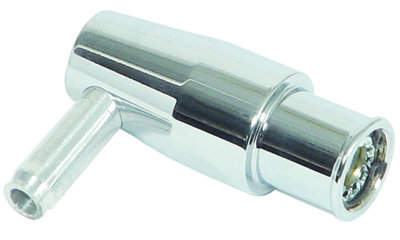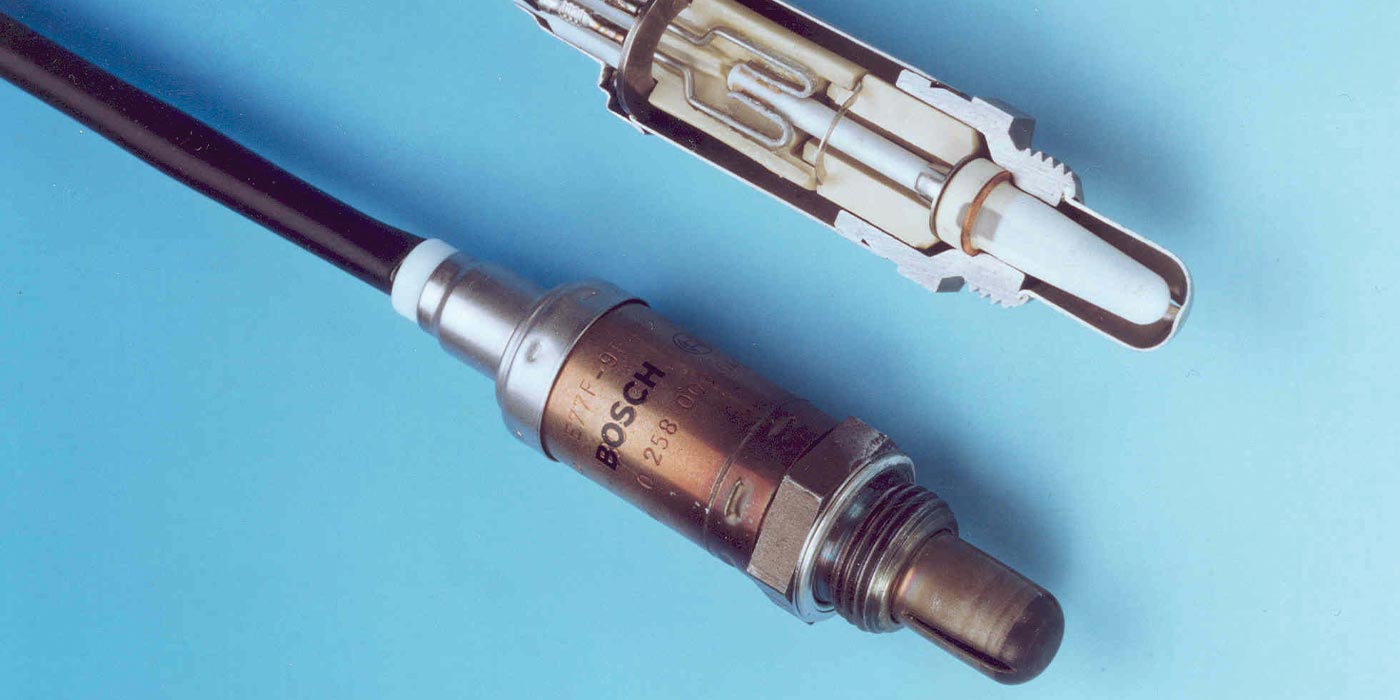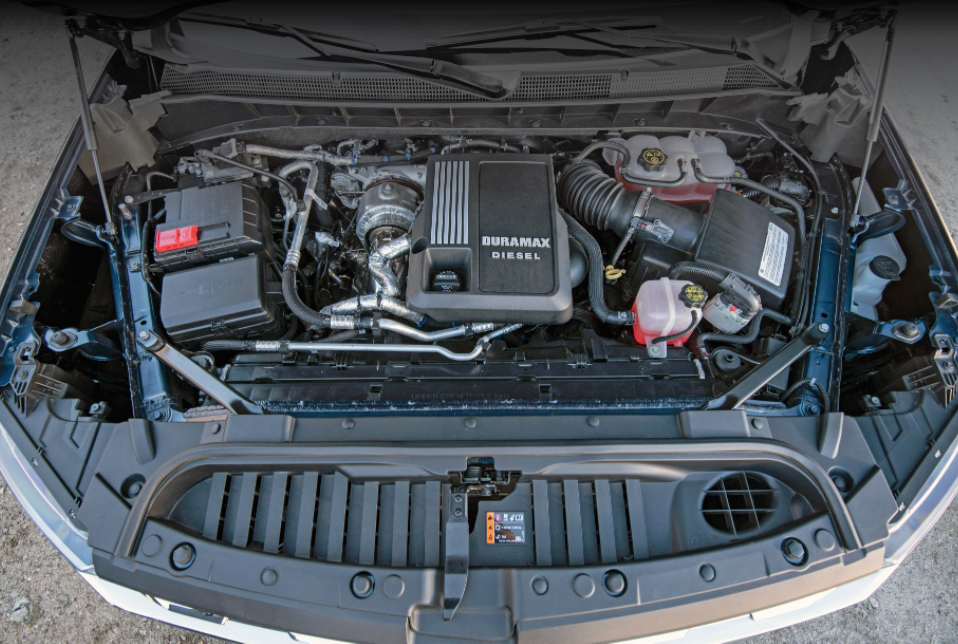The major component in the Positive Crankcase Ventilation (PCV) system is the PCV valve, a simple spring-loaded valve with a sliding pintle inside. The pintle is tapered like a bullet so it will increase or decrease airflow depending on its position inside the valve housing. The movement of the pintle up and down changes the orifice opening to regulate the volume of air passing through the PCV valve.
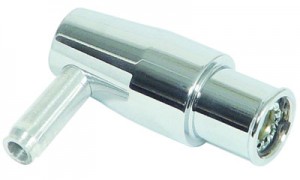
The PCV valve is typically located in a valve cover or the intake valley and usually fits into a rubber grommet. The location of the valve allows it to pull vapors from inside the engine without sucking oil from the crankcase (baffles inside the valve cover or valley cover deflect and help separate droplets of oil from the blowby vapors).
A hose connects the top of the PCV valve to a vacuum port on the throttle body, carburetor or intake manifold. This allows the vapors to be siphoned directly into the engine without gumming up the throttle body or carburetor.
How PCV Flow Changes With Engine Speed & Load
The flow rate of a PCV valve is calibrated for a specific engine application. For the system to function normally, therefore, the PCV valve must adjust the flow rate as operating conditions change.
When the engine is off, the spring inside the valve pushes the pintle shut to seal the crankcase and prevent the escape of any residual vapors into the atmosphere.
When the engine starts, the vacuum in the intake manifold pulls on the pintle and sucks the PCV valve open. The pintle is pulled up against the spring and moves to its highest position, but the tapered shape of the pintle doesn’t allow maximum flow in this position. Instead, it restricts flow so the engine will idle smoothly.
The same thing happens during deceleration when intake vacuum is high. The pintle is pulled all the way up to reduce flow and minimize the effect of blowby on deceleration emissions.
When the engine is cruising under light load and at part throttle, there is less intake vacuum and less pull on the pintle, which allows the pintle to slide down to a mid-range position and permit more airflow.
Under high load or hard acceleration conditions, intake vacuum drops even more, allowing the spring inside the PCV valve to push the pintle valve even lower to its maximum flow position. If blowby pressure builds up faster than the PCV system can handle, the excess pressure flows back through the breather hose to the air cleaner and is sucked back into the engine and burned.
In the event of an engine backfire, the sudden rise in pressure inside the intake manifold blows back through the PCV hose and slams the pintle shut. This prevents the flame from traveling back through PCV valve, possibly igniting fuel vapors inside the crankcase.
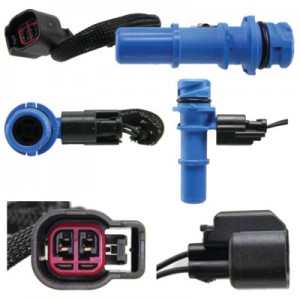 PCV Maintenance
PCV MaintenanceOn many 2002 and later vehicles with OBD II, the OBD II system monitors the PCV system and checks the flow rate once during each drive cycle. On older OBD II and OBD I systems, the PCV system is not monitored. So, a problem with the PCV system on a pre-2002 vehicle probably won’t turn on a MIL or set a diagnostic trouble code (DTC).
PCV valves can last a long time, but they may eventually wear out or clog — especially if the vehicle owner neglects regular oil changes and sludge builds up in the crankcase. The same sludge and oil varnish that gums up the engine can also plug up the PCV valve.
PCV Problems
Accumulation of fuel and oil varnish deposits and/or sludge inside the valve can restrict or even block the flow of vapors through the valve — this is the most common PCV system problem. A restricted or plugged PCV valve cannot pull moisture and blowby vapors out of the crankcase, which can cause engine-damaging sludge and a backup of pressure that may force oil to leak past gaskets and seals. The loss of airflow through the valve can also cause the air/fuel mixture to run richer than normal, increasing fuel consumption and emissions. The same thing can happen if the pintle inside the PCV valve sticks shut.
If the pintle inside the PCV valve sticks open, or the spring breaks, the PCV valve may flow too much air and lean out the idle mixture. This may cause a rough idle, hard starting and/or a lean misfire (which increases emissions and wastes fuel). The same thing can happen if the hose connecting the valve to the throttle body, carburetor or intake manifold pulls loose, cracks or leaks. A loose or leaky hose allows “un-metered” air to enter the engine and upset the fuel mixture, especially at idle, where the idle mixture is most sensitive to vacuum leaks.
On late-model vehicles with computer engine controls, the engine management system will detect any changes in the air/fuel mixture and compensate by increasing or decreasing short-term and long-term fuel trim (STFT and LTFT). Small corrections cause no problems, but large corrections (more than 10 to 15 points negative or positive) will typically set a lean or rich DTC and turn on the MIL.
Problems can also occur if someone installs the wrong PCV valve for the application. The flow rate of the PCV valve is calibrated for a specific engine application. Two valves that appear to be identical on the outside (same diameter and hose fittings) may have different pintle valves and springs inside, giving them very different flow rates. A PCV valve that flows too much air will lean the air/fuel mixture, while one that flows too little will richen the mixture and increase the risk of sludge buildup in the crankcase.
Cold temperature could cause a PCV valve to freeze and stick because of moisture drawn through the PCV system. If the PCV valve gets stuck in a closed position, this can allow crankcase pressure and blowby to damage gaskets. A heated PCV valve keeps the PCV system operational, especially in colder climates, by warming the valve with either engine coolant or an electrical heater element.
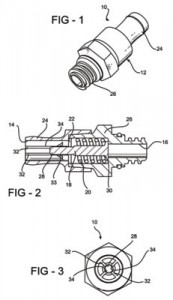 PCV Valve Checks
PCV Valve ChecksThere are a number of ways to check a PCV valve:
1. Remove the valve and shake it. If it rattles, the pintle inside is not stuck and the valve should flow air. But there’s no way to know if the spring is weak or broken, or if a buildup of varnish and deposits inside the valve is restricting flow.
2. Check for vacuum by holding your finger over the end of the valve while the engine is idling. This test tells you if the vacuum is reaching the valve, but not if the valve is flowing properly. If you don’t feel any vacuum, the valve or hose is plugged and needs to be replaced.
3. Use a flow tester to check the performance of the valve. This method is the best because it tests both vacuum and air flow.
PCV System Checks
The volume of air that is pulled from the crankcase by the PCV system is important because it takes a certain amount of airflow to remove the blowby vapors and moisture, but too much airflow can upset the air/fuel mixture in the engine. So, to check airflow, you can do any of the following:
Pinch or block off the vacuum hose to the PCV valve with the engine idling at operating temperature. The engine idle rpm should typically drop about 50 to 80 rpm before the idle speed corrects itself (or you can disconnect the idle speed control motor so it won’t affect idle speed during this test). If there is no change in idle speed, check the PCV valve, hose and breather tube for a restriction or blockage. A greater change would indicate too much airflow through the PCV valve. Check the part number on the PCV valve to see if it is the correct one for the engine. The wrong valve may flow too much air. If there is no part number, replace the valve with a new one (which meets OEM specifications) and test again.
Measure the amount of vacuum in the crankcase. With the engine at normal operating temperature, block off the PCV breather tube or vent to the engine — usually the hose that runs from the air cleaner housing to the valve cover on the engine. Pull out the dipstick and connect a vacuum-pressure gauge to the dipstick tube. A typical PCV system should be pulling about 1 to 3 inches of vacuum in the crankcase at idle. If you see a significantly higher vacuum reading, the intake manifold gasket is probably leaking and pulling vacuum on the crankcase. Replace the leaky intake manifold gasket, if so. If you see no vacuum, or find a buildup of pressure in the crankcase, the PCV system is plugged or is not pulling enough air through the crankcase to get rid of the blowby vapors.
Note: An engine will not be able to develop much vacuum in the crankcase with a leaky oil pan, valve cover, intake manifold gasket or crankshaft seals because it is pulling in outside air, which is also unfiltered and can further contaminate the oil.
To find a crankcase air leak, you can lightly pressurize (no more than 1 to 3 psi) the crankcase with shop air via the dipstick tube, oil filler cap or breather after blocking all the other vents. Do not use any more air pressure than this or you may create leaks where there were no leaks before. Then use a spray bottle to squirt soapy water around the gasket seams and seals. If you see bubbles, you have found an air leak. Replace the gasket or seal as needed.
PCV Replacement Tips
When replacing a PCV valve, make sure the replacement valve is the same as the original. External appearances can be misleading because valves that look the same on the outside may be calibrated differently inside. If the replacement valve does not have the same flow characteristics as the original, it may upset emissions and cause driveability problems.
The PCV hose that connects the PCV valve to the engine should also be replaced when the valve is changed. Use hose that is approved for PCV use only.
 The PCV valve is typically located in a valve cover or the intake valley and usually fits into a rubber grommet. The location of the valve allows it to pull vapors from inside the engine without sucking oil from the crankcase (baffles inside the valve cover or valley cover deflect and help separate droplets of oil from the blowby vapors).
The PCV valve is typically located in a valve cover or the intake valley and usually fits into a rubber grommet. The location of the valve allows it to pull vapors from inside the engine without sucking oil from the crankcase (baffles inside the valve cover or valley cover deflect and help separate droplets of oil from the blowby vapors). PCV Maintenance
PCV Maintenance PCV Valve Checks
PCV Valve Checks
